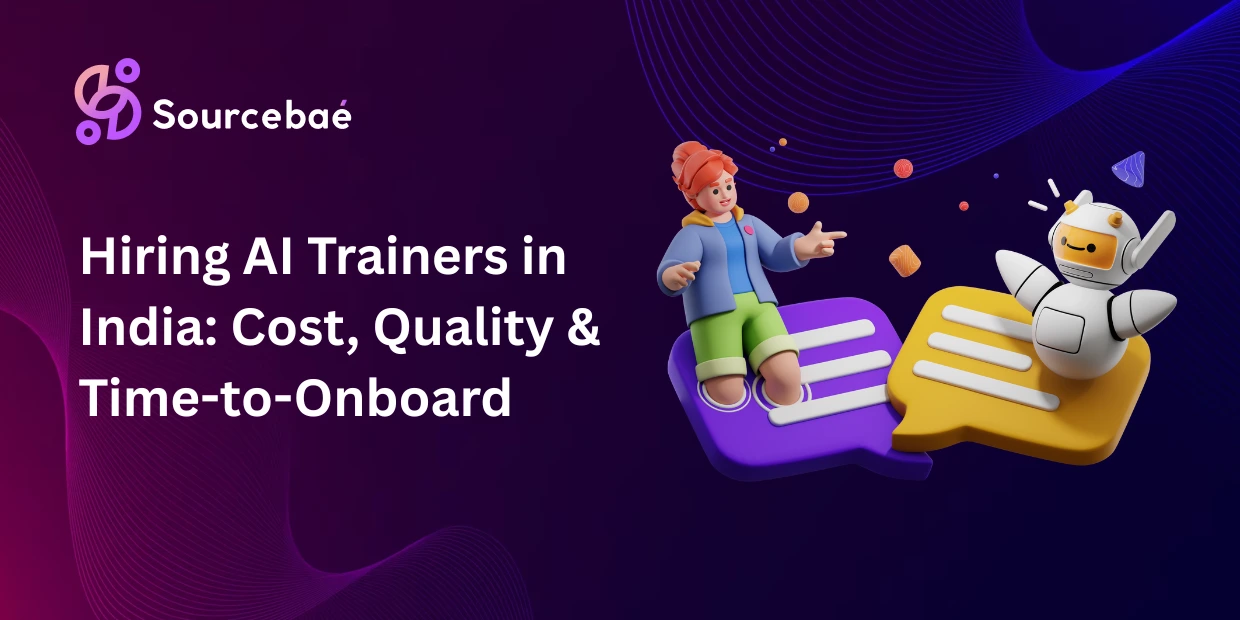The global capability center (GCC) landscape has undergone a remarkable transformation. What began as cost-saving back-office operations has evolved into strategic innovation hubs driving digital transformation and competitive advantage for multinational enterprises worldwide. As GCCs mature into their next phase of growth, leaders face a critical decision: should they scale their operations through internal hiring or strategic partnerships?
This strategic choice has become increasingly complex as India’s GCC market alone is projected to reach $100 billion by 2030, employing 2.5-2.8 million professionals. With over 1,700 GCCs currently operating in India and generating $64.6 billion in revenue, the stakes for making the right scaling decisions have never been higher.
The Evolution of GCC Scaling Strategies
From Cost Centers to Innovation Powerhouses
Modern GCCs are no longer defined by headcount alone but by their agility and ability to drive global innovation. The traditional GCC model is evolving, with hybrid approaches reshaping how companies design and scale their operations. This transformation demands a more nuanced approach to talent acquisition and operational scaling.
Key drivers influencing GCC scaling decisions include:
- Creating efficiencies through optimized processes
- Building unique competencies in emerging technologies
- Accessing new markets and talent pools
- Driving innovation beyond traditional operational boundaries
The New Scaling Imperative
72% of GCCs now cite talent acquisition and development as their top priority, ahead of technology infrastructure and cost considerations. This shift reflects the changing role of GCCs from cost arbitrage centers to strategic innovation hubs requiring specialized expertise in AI/ML, cloud architecture, and digital transformation.
Internal Hiring: Building Your Capability Foundation
The Strategic Advantages of Insourcing
Internal hiring offers unparalleled control and cultural alignment that external partnerships often struggle to match. When GCCs hire internally, they create a dedicated workforce that understands the organization’s values, processes, and long-term objectives.
Key benefits of internal hiring include:
Complete Control Over Operations: Direct management of all aspects including hiring, training, processes, quality, and security allows for immediate adjustments and full compliance oversight. Internal teams can pivot quickly to changing market conditions without external contract constraints.
Cultural Integration and Innovation: GCC teams integrated into the parent company’s culture foster collaborative environments where teams can proactively develop new ideas and proprietary solutions. This deep cultural alignment leads to higher employee engagement and retention rates.
Knowledge Retention: Unlike outsourcing arrangements, internal hiring ensures that valuable intellectual property and business knowledge remains within the organization. This creates long-term competitive advantages that cannot be easily replicated.
Quality Control and Alignment: Internal teams maintain consistent quality standards and have unrestricted access to project stakeholders, ensuring deliverables align with company objectives.
When Internal Hiring Makes Strategic Sense
Organizations should prioritize internal hiring when:
- Core business functions require deep domain expertise
- Long-term strategic initiatives need sustained focus
- Intellectual property protection is paramount
- Company culture and values are central to success
- Direct control over talent development is essential
The Investment Requirements
Internal hiring demands significant upfront investment in recruitment infrastructure, training programs, and retention strategies. GCCs must develop comprehensive talent acquisition capabilities, often requiring partnerships with universities, specialized recruitment agencies, and robust employer branding initiatives.
Strategic Partnerships: Accelerating Growth Through External Expertise
The Partnership Advantage
Outsourcing provides rapid access to specialized experts without lengthy recruitment and onboarding processes. External partners bring established teams ready to deliver results immediately, helping GCCs save time, reduce fixed costs, and focus on core strategic initiatives.
Strategic benefits of partnering include:
Speed to Market: External partners can deploy solutions immediately with pre-trained teams, significantly reducing time-to-value compared to internal hiring cycles.
Access to Specialized Expertise: Partners often operate with cutting-edge technologies and best practices, providing access to skills that would be costly to develop internally.
Scalability and Flexibility: Outsourcing enables rapid scaling for specific project phases without long-term headcount commitments. This flexibility is particularly valuable for managing seasonal demands or experimental initiatives.
Risk Management: Well-structured contracts can transfer certain legal responsibilities and operational risks to specialized partners.
The Build-Operate-Transfer (BOT) Model
The BOT model offers a structured approach that bridges internal hiring and outsourcing. This three-phase approach allows organizations to:
- Build: Leverage partner expertise for initial setup and infrastructure development
- Operate: Allow partners to manage operations while building internal capabilities
- Transfer: Transition to full internal ownership once operational maturity is achieved
Managing Partnership Challenges
Successful partnerships require clear frameworks covering SLAs, KPIs, data protection agreements, and compliance requirements. Organizations must also address potential challenges including:
- Dependency on external partners
- Reduced daily process control
- Cultural alignment difficulties
- Integration complexities with existing systems
The Decision Framework: Internal vs Partnership
Evaluation Criteria for Scaling Decisions
When determining the optimal approach, GCC leaders should assess multiple factors:
Strategic Importance: Core functions that drive competitive advantage typically warrant internal development, while support functions may be suitable for outsourcing.
Timeline Requirements: Urgent needs favor partnerships for immediate deployment, while long-term capabilities benefit from internal development.
Skill Availability: Specialized skills with limited market availability may require partnerships, while general capabilities can be developed internally.
Cost Structure: Consider both immediate costs and long-term value creation potential when comparing options.
The Hybrid Approach: Best of Both Worlds
Many organizations are adopting hybrid models that combine internal capabilities with strategic partnerships. This approach allows GCCs to:
- Maintain control over core strategic functions
- Access specialized expertise through partnerships
- Scale efficiently based on specific project requirements
- Build internal capabilities while leveraging external innovation
Example implementations include:
- Internal teams for product development and R&D
- Outsourced partners for IT maintenance and customer support
- BOT models for emerging technology implementations
Industry-Specific Considerations
Technology and Financial Services
Technology and BFSI sectors lead in GCC salary increases, with projected growth of 10.2% and 10.4% respectively. These industries require deep technical expertise and regulatory compliance, often favoring internal development for core functions while partnering for specialized implementations.
Manufacturing and Pharmaceuticals
Manufacturing and pharmaceutical GCCs are experiencing significant expansion as AI, automation, and digital engineering become essential. These sectors benefit from hybrid approaches that combine internal process expertise with external technology partnerships.
Future-Ready Talent Strategies
The Skills Evolution
48% of GCCs now prioritize proven capabilities over academic credentials, reflecting the shift toward skill-based hiring. This trend influences both internal hiring and partnership evaluation criteria, emphasizing practical experience and adaptability.
AI and Automation Impact
GCCs are moving beyond traditional RPA to AI-driven automation and process mining. This technological evolution requires both internal capability building and strategic partnerships with specialized AI providers.
Emerging Geographies
Tier-II and Tier-III cities now house 7% of India’s GCCs, employing nearly 540,000 tech professionals. This geographic expansion creates new opportunities for both internal hiring and partnership development.
Implementation Best Practices
For Internal Hiring Success
Successful internal scaling requires:
- Structured workforce planning aligned with business objectives
- Comprehensive onboarding programs with mentorship and cultural integration
- Continuous learning and development initiatives to maintain competitiveness
- Competitive compensation packages including flexible work arrangements
For Effective Partnerships
Partnership success depends on:
- Clear contractual frameworks with defined SLAs and performance metrics
- Cultural alignment assessment and integration strategies
- Regular communication protocols and feedback mechanisms
- Transition planning for potential future internalization
Measuring Success and ROI
Internal Hiring Metrics
- Employee retention rates and career progression statistics
- Innovation output and intellectual property development
- Cultural alignment scores and engagement levels
- Time-to-productivity for new hires
Partnership Performance Indicators
- Service level achievement against defined metrics
- Cost efficiency compared to internal alternatives
- Quality consistency and error rates
- Scalability responsiveness during demand fluctuations
Strategic Recommendations for GCC Leaders
Assess Your Maturity Level
Before making scaling decisions, evaluate your GCC’s current maturity across three critical dimensions:
- Innovation capability and strategic impact
- Competitive differentiation potential
- Operational efficiency and process optimization
Develop a Balanced Portfolio
The most successful GCCs adopt portfolio approaches that strategically combine internal capabilities with external partnerships based on:
- Function criticality and strategic importance
- Required expertise level and market availability
- Timeline requirements and scalability needs
- Risk tolerance and control requirements
Plan for Evolution
GCC scaling strategies should be dynamic and adaptable. What begins as a partnership arrangement may evolve into internal capability, while some internal functions may benefit from external specialization as the organization matures.
Conclusion: The Strategic Path Forward
The decision between internal hiring and strategic partnerships isn’t binary—it’s strategic. Successful GCC scaling requires a nuanced understanding of your organization’s unique needs, market dynamics, and long-term objectives.
As GCCs continue evolving into strategic innovation hubs, leaders must balance the control and cultural alignment benefits of internal hiring with the speed, expertise, and flexibility advantages of partnerships. The most successful organizations will be those that develop hybrid approaches, strategically combining both models to create competitive advantages while maintaining operational agility.
By 2025, the winners won’t be those hiring the most but those developing talent the fastest. This reality demands thoughtful, strategic approaches to GCC scaling that prioritize both immediate operational needs and long-term innovation capabilities. The organizations that master this balance will define the next generation of global capability excellence.
The future belongs to GCCs that can seamlessly integrate internal excellence with external innovation, creating dynamic ecosystems that drive enterprise-wide transformation and competitive advantage.
This comprehensive analysis draws from extensive industry research, expert insights, and real-world case studies to provide actionable guidance for GCC scaling decisions. For specific implementation support, consider consulting with specialized GCC advisory services that can provide tailored recommendations based on your unique organizational context.






